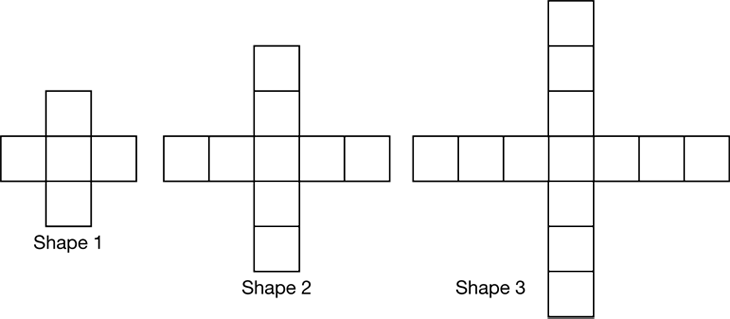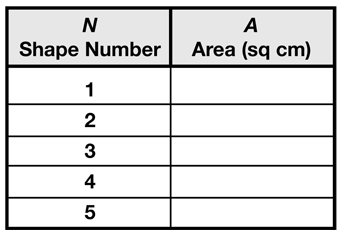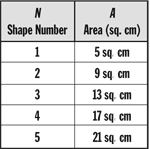B. Find the Pattern



You will need one or two sheets of Centimeter Grid Paper for these problems.


- Draw Shapes 4 and 5 on Centimeter Grid Paper.
- Complete the data table for Shapes 1–5. What patterns do you see?
- Find the area of Shape 10. Show or tell how you found your answer.
- Predict the area of Shape 50. Show or tell how you made your prediction.
- Write a rule for finding the Area (A) of a Shape if you know the Shape Number (N).
- Use your rule to find the Area of Shape Number 75.













